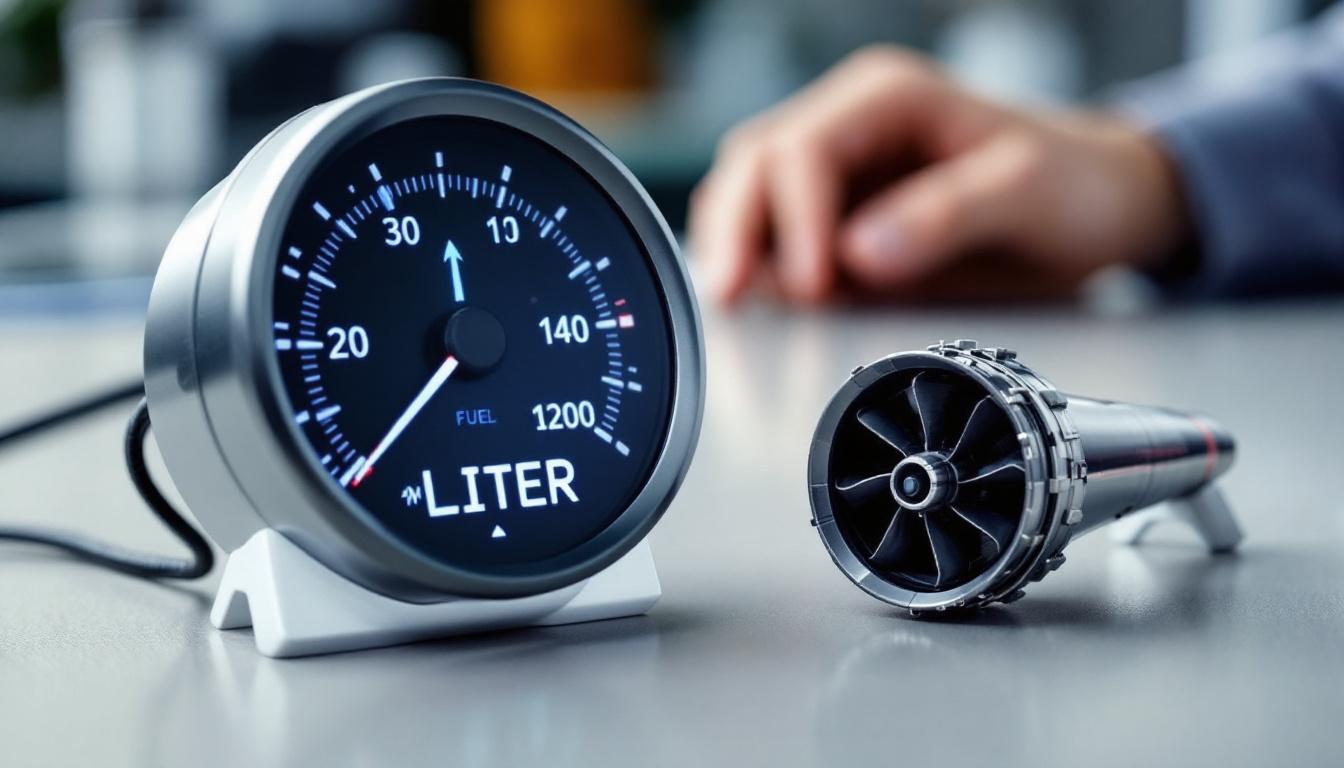
Converting Litres to Pounds for Jet A1 Fuel
At GLOBAL TERMINAL NETHERLANDS B.V, we understand the importance of precise fuel measurements in aviation. Converting litres to lbs for Jet A1 fuel is a critical skill for professionals in our industry.
This guide will walk you through the process, providing you with the knowledge and tools to perform accurate conversions. Whether you’re a pilot, fuel manager, or logistics specialist, mastering this conversion will enhance your operational efficiency.
What is Jet A1 Fuel?
Definition and Key Properties
Jet A1 fuel powers modern aviation. This kerosene-based fuel drives jet and turboprop engines. It boasts a low freezing point of -47°C, which allows for high-altitude flights where temperatures drop significantly. The fuel also features a high flash point of 38°C, which enhances safety during handling and storage. International standards (such as ASTM D1655) regulate these properties strictly.
Aviation Applications
Jet A1 fuel primarily serves commercial and military aviation. It propels a wide range of aircraft, from small private jets to massive commercial airliners. In 2023, commercial carriers consumed 8% less fuel than in 2019, while general aviation users only consumed 11% less fuel in 2020 than in 2019, according to the U.S. Energy Information Administration. This highlights the importance of efficient fuel logistics in maintaining the global air transport network.
Precision in Measurement
Accurate measurement of Jet A1 fuel is not just important-it’s essential. A miscalculation of just 1% in a large commercial airliner’s fuel load could lead to potentially dangerous situations. For instance, a Boeing 747 can carry up to 238,604 liters of fuel. A 1% error in measurement would equate to 2,386 liters (enough to significantly impact flight range and safety margins).
Advanced Metering Systems
The high-stakes world of aviation fuel management demands precision. State-of-the-art measurement technologies and rigorous quality control processes play a vital role. Advanced metering systems in key global ports ensure accuracy to within 0.1%-a level of precision that aviation operators rely on for their operations.
Environmental Considerations
The aviation industry faces increasing pressure to reduce its carbon footprint. Jet A1 fuel, while efficient, contributes significantly to greenhouse gas emissions. This has led to research into sustainable aviation fuels (SAFs) that can blend with or replace traditional Jet A1. The industry aims to reduce carbon emissions by 50% by 2050 (compared to 2005 levels), making the accurate measurement and efficient use of fuel even more critical.
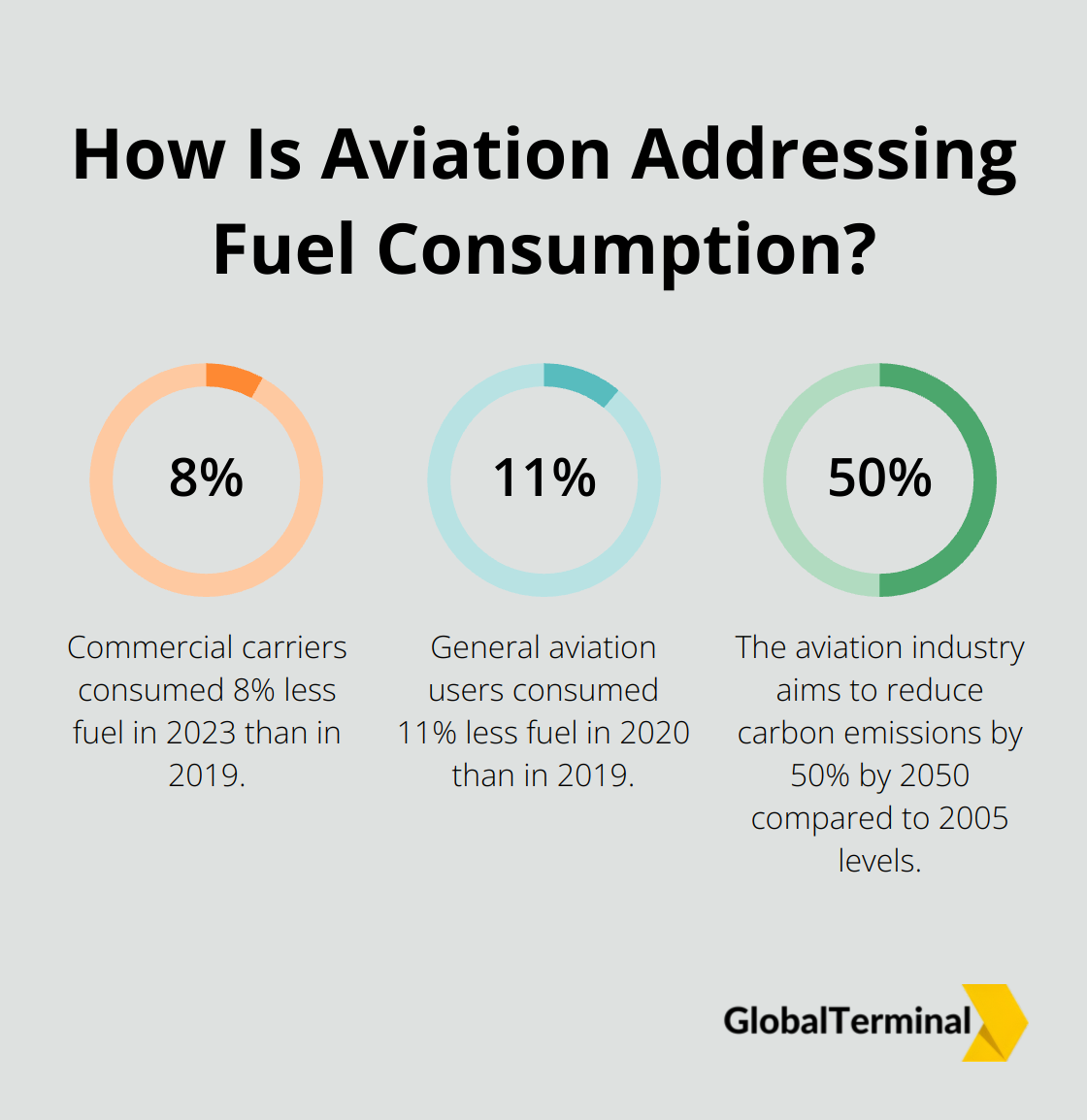
As we move forward, understanding the conversion of Jet A1 fuel from liters to pounds becomes increasingly important for efficient fuel management and environmental responsibility.
How Dense is Jet A1 Fuel?
Density Range of Jet A1
Jet A1 fuel density varies within a specific range, which impacts aviation operations. The density typically falls between 0.775 and 0.840 kg/L at 15°C. This variation, while seemingly minor, can significantly affect fuel calculations. For example, a density difference of 0.01 kg/L for a large commercial aircraft carrying 200,000 liters of fuel could result in a weight discrepancy of 2,000 kg (enough to impact flight planning and performance calculations).
Temperature and Pressure Influences
Temperature and pressure play key roles in determining Jet A1 fuel density. As temperature increases, the volume of liquids generally increases, which affects their density. The coefficient of thermal expansion measures how much the volume changes with temperature. Pressure changes, while less impactful, also affect density. At sea level, the pressure effect is negligible, but at cruising altitudes of 30,000 feet, the density can decrease by about 0.005 kg/L.
Conversion Formula Explained
To convert liters of Jet A1 fuel to pounds, use this formula:
Pounds = Liters × Density (kg/L) × 2.20462
For instance, if we have 1,000 liters of Jet A1 with a density of 0.8 kg/L:
1,000 × 0.8 × 2.20462 = 1,763.7 pounds
This calculation proves essential for flight planning, fuel management, and cost analysis. Advanced metering systems account for real-time density variations, ensuring precise measurements for aviation operations.
Importance of Accurate Density Measurements
Accurate density measurements are vital in the aviation industry. Even small discrepancies can lead to significant consequences in fuel load calculations, flight range estimations, and overall aircraft performance. Fuel providers and airports use specialized equipment (such as hydrometers and digital density meters) to measure fuel density accurately. These tools help maintain the high standards required for safe and efficient air travel.
Density Variations and Fuel Quality
The density of Jet A1 fuel also serves as an indicator of its quality and composition. Variations outside the expected range may signal contamination or improper blending. Regular density checks (along with other quality control measures) help ensure that the fuel meets the strict standards set by aviation authorities. This vigilance maintains the safety and reliability of air travel worldwide.
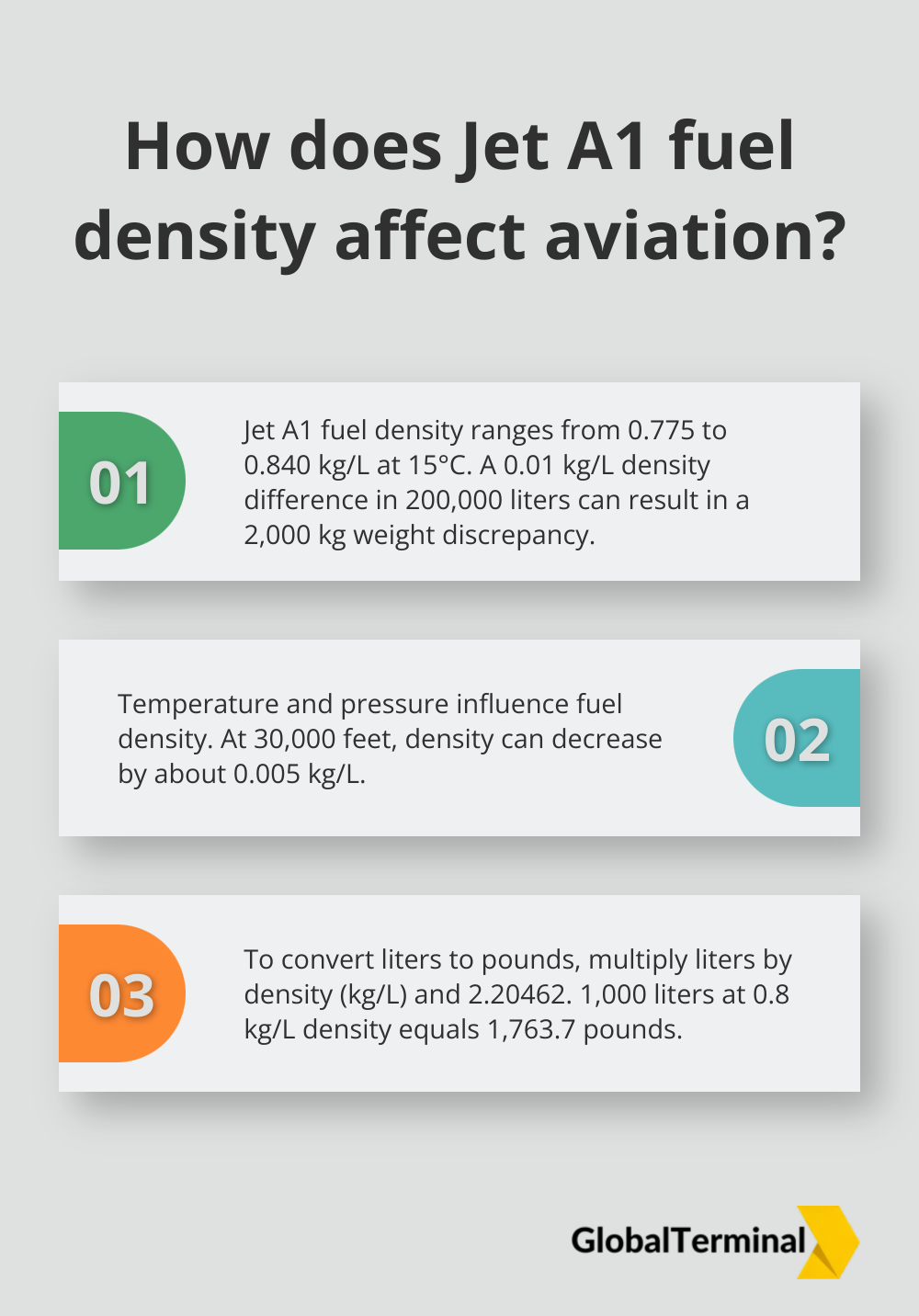
As we move forward, understanding these density factors becomes crucial for precise fuel management. Let’s explore how to apply this knowledge in practical conversion scenarios.
How to Convert Jet A1 Fuel from Litres to Pounds
Gathering Essential Data
To convert Jet A1 fuel from litres to pounds, you need two key pieces of information: the volume of fuel in litres and its current density. Fuel density varies based on temperature and can be obtained from daily fuel reports or measured using a hydrometer. For Jet A-1 fuel, density typically ranges from 0.775 to 0.840 kg/L at 15°C. Always use the most recent density measurement for accuracy.
Applying the Conversion Formula
Once you have the volume and density, use this formula:
Pounds = Litres × Density (kg/L) × 0.45359237
The factor 0.45359237 converts kilograms to pounds. For example, if you have 5,000 litres of Jet A1 fuel with a density of 0.805 kg/L:
5,000 × 0.805 × 0.45359237 = 1,824.5 pounds
This calculation plays a key role in flight planning, fuel management, and cost analysis.
Real-World Examples
Let’s examine some practical scenarios:
- A Boeing 737 needs to uplift 20,000 litres of Jet A1. Today’s fuel density is 0.810 kg/L. The weight in pounds would be:
20,000 × 0.810 × 0.45359237 = 7,348.2 pounds
- An Airbus A320 has 15,000 litres remaining. The current fuel density is 0.795 kg/L. The remaining fuel weight is:
15,000 × 0.795 × 0.45359237 = 5,411.7 pounds
These calculations directly impact flight safety and performance through weight and balance calculations.
Precision in Measurement
In the aviation industry, even small errors can lead to significant consequences. Advanced metering systems account for real-time density variations, ensuring precise measurements for aviation operations. Some systems can measure fuel density to within 0.0001 kg/L, providing unparalleled accuracy in fuel weight calculations.
Importance in Aviation Fuel Management
Mastering these conversions is essential for anyone involved in aviation fuel management. It ensures compliance with weight restrictions, optimizes fuel efficiency, and enhances overall flight safety. As the industry moves towards more sustainable practices, precise fuel management becomes even more important in reducing carbon footprints and operating costs.
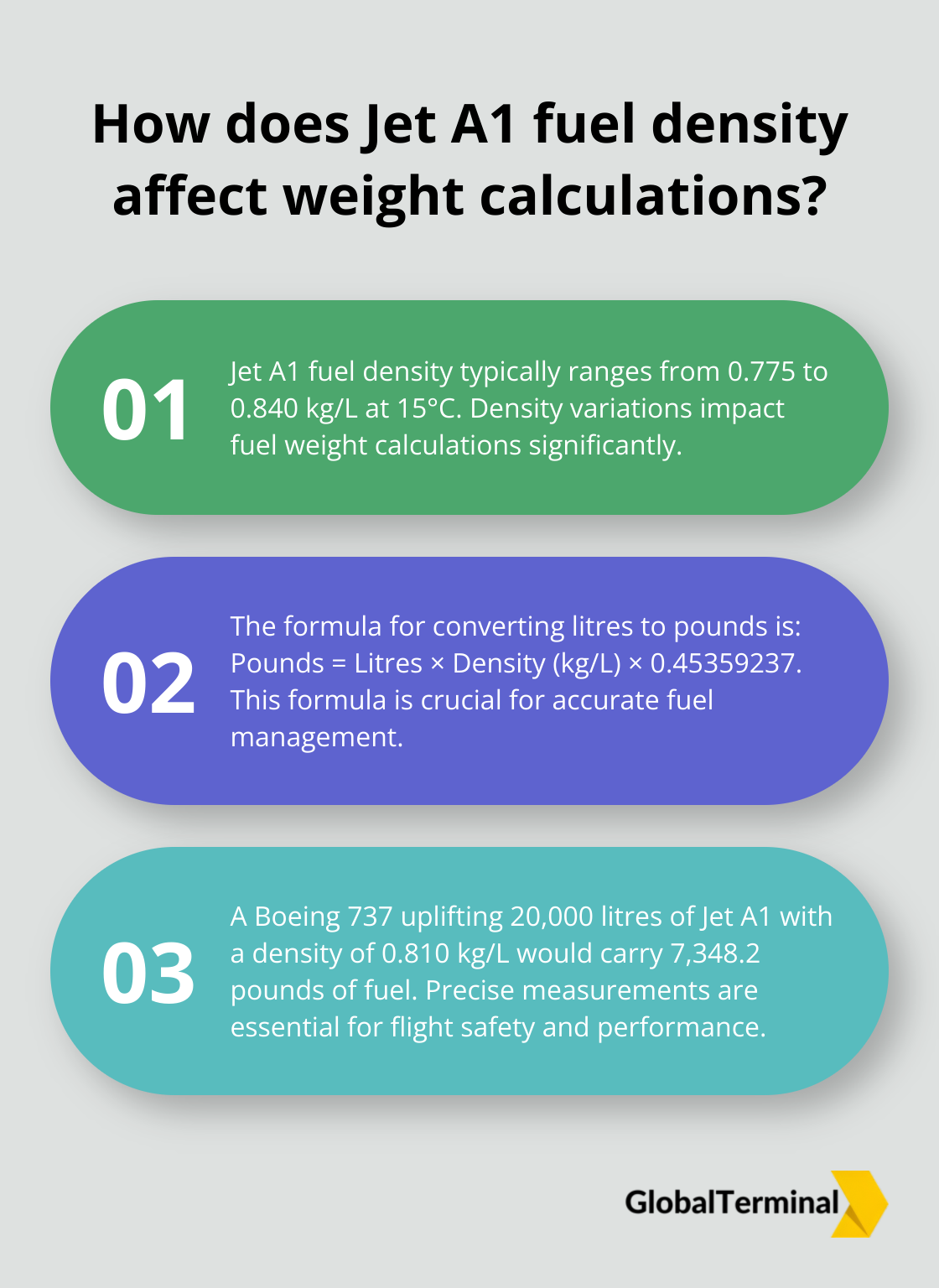
Final Thoughts
Converting litres to lbs for Jet A1 fuel requires precision and expertise in aviation fuel management. This process impacts flight safety, operational efficiency, and cost management in the aviation industry. Accurate fuel weight calculations affect aircraft performance, range estimation, and compliance with weight restrictions.
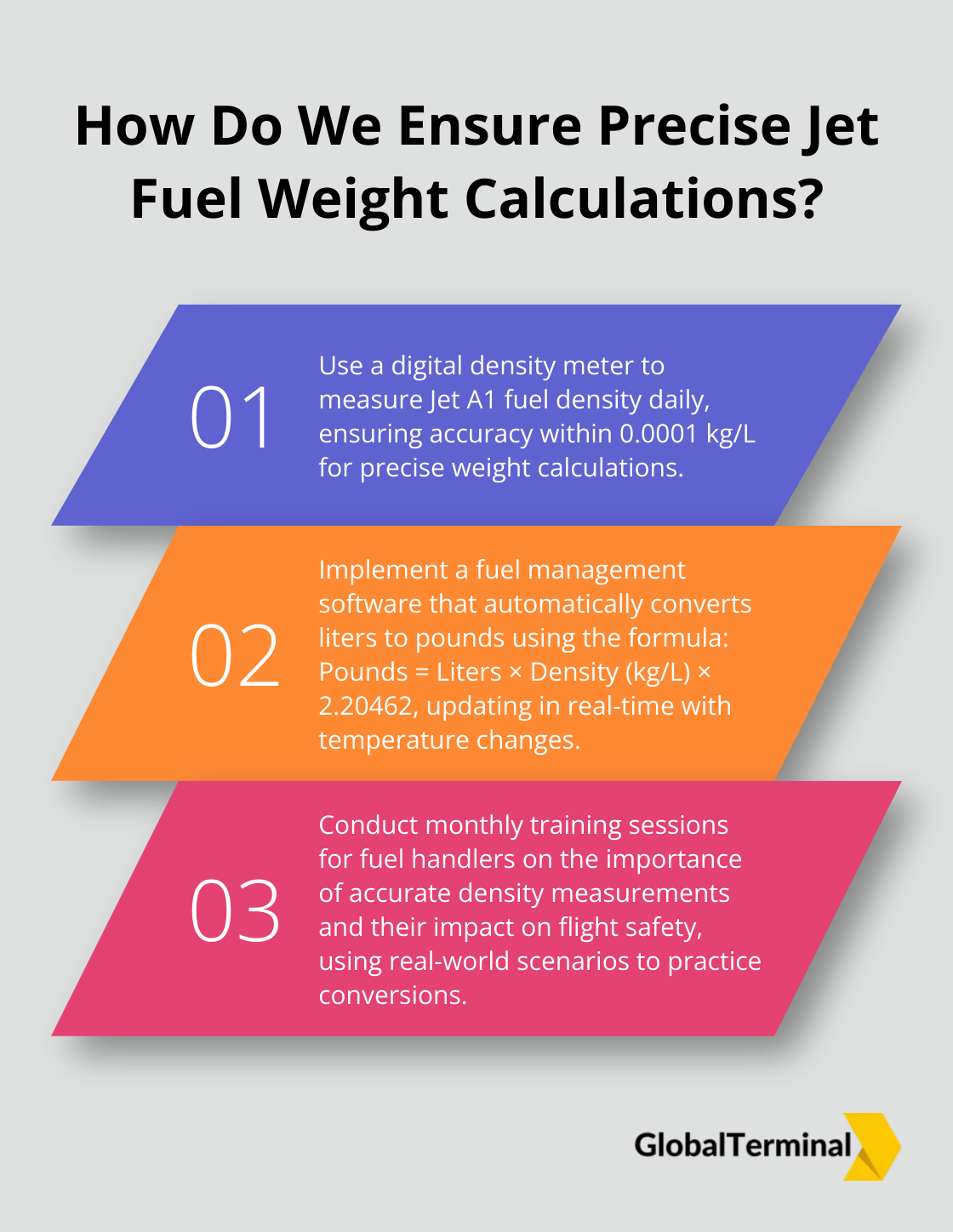
The applications of these conversions extend beyond the cockpit to fuel logistics, supply chain management, and environmental impact assessments. Mastering this conversion process allows aviation professionals to optimize fuel efficiency, reduce operational costs, and contribute to the industry’s sustainability goals. GLOBAL TERMINAL NETHERLANDS B.V provides state-of-the-art storage facilities and advanced logistics solutions to ensure accurate and efficient fuel management.
The ability to accurately convert litres to lbs for Jet A1 fuel will remain essential for maintaining the safety, efficiency, and sustainability of air travel worldwide. Embracing precision in fuel management allows the aviation industry to push boundaries while prioritizing safety and environmental responsibility (without compromising operational effectiveness).

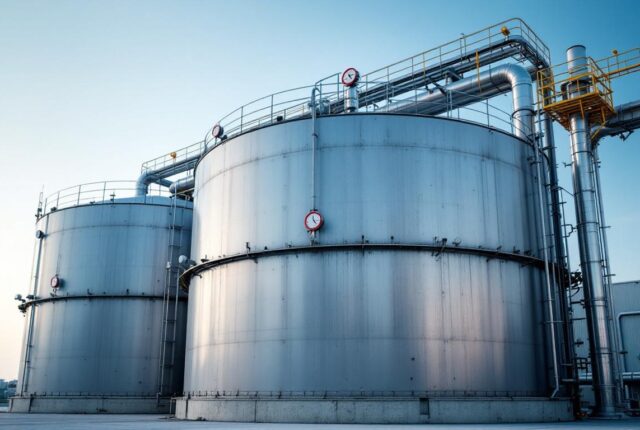
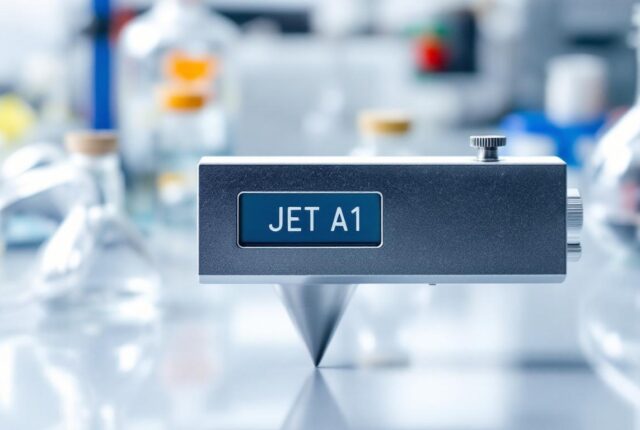
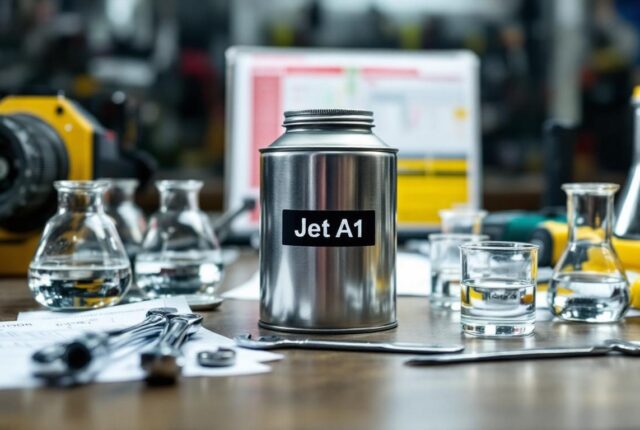

Leave a Reply